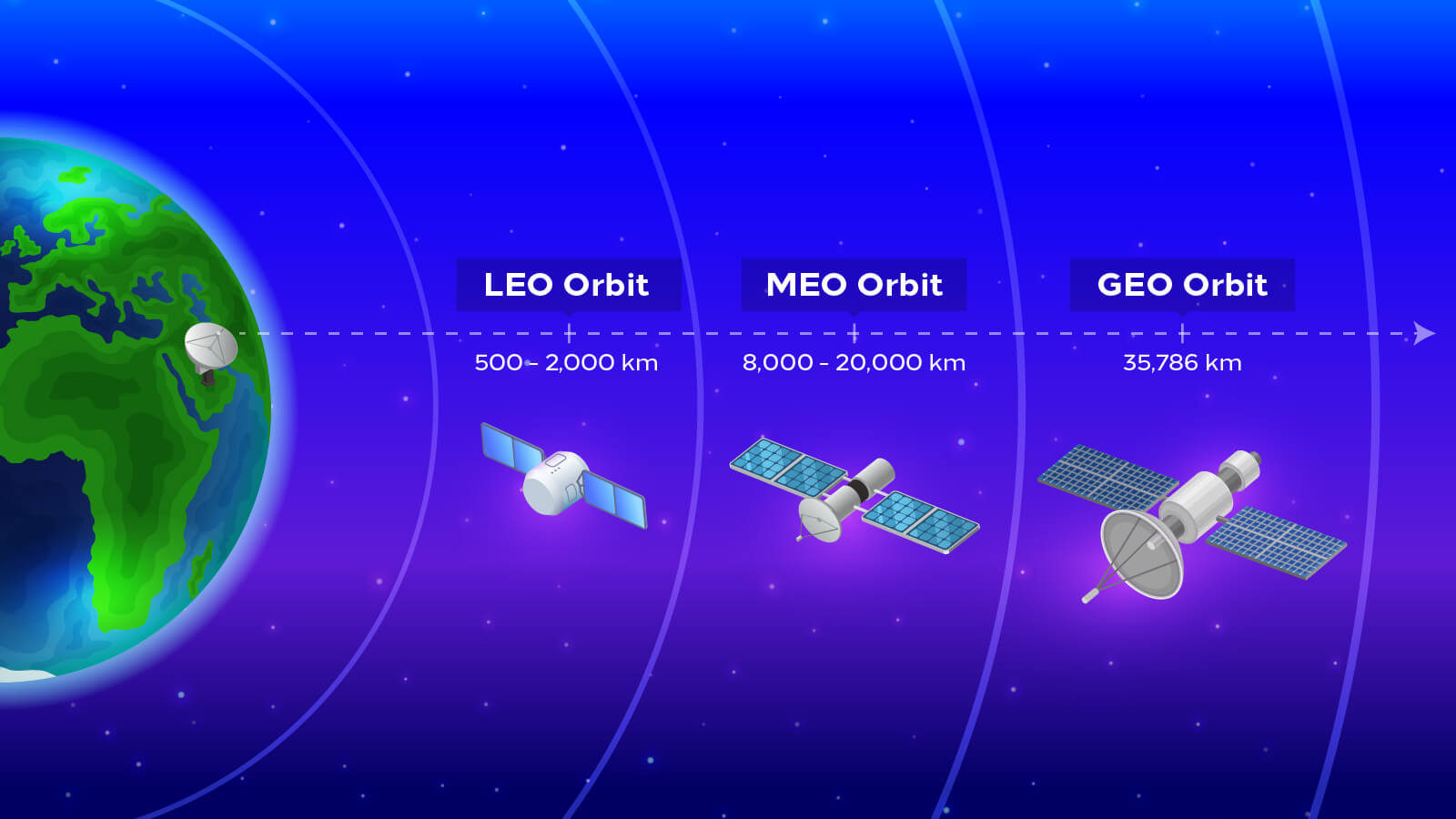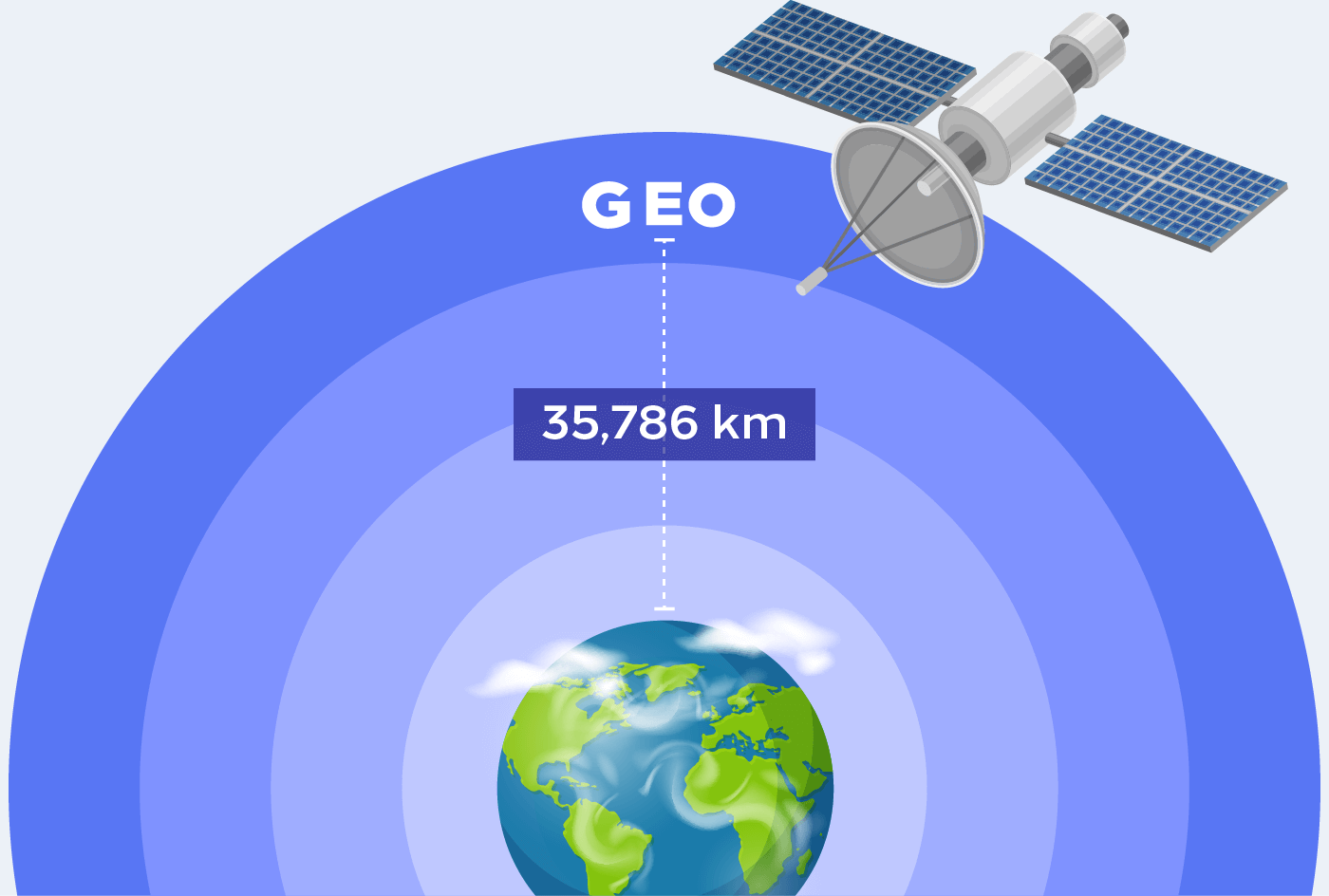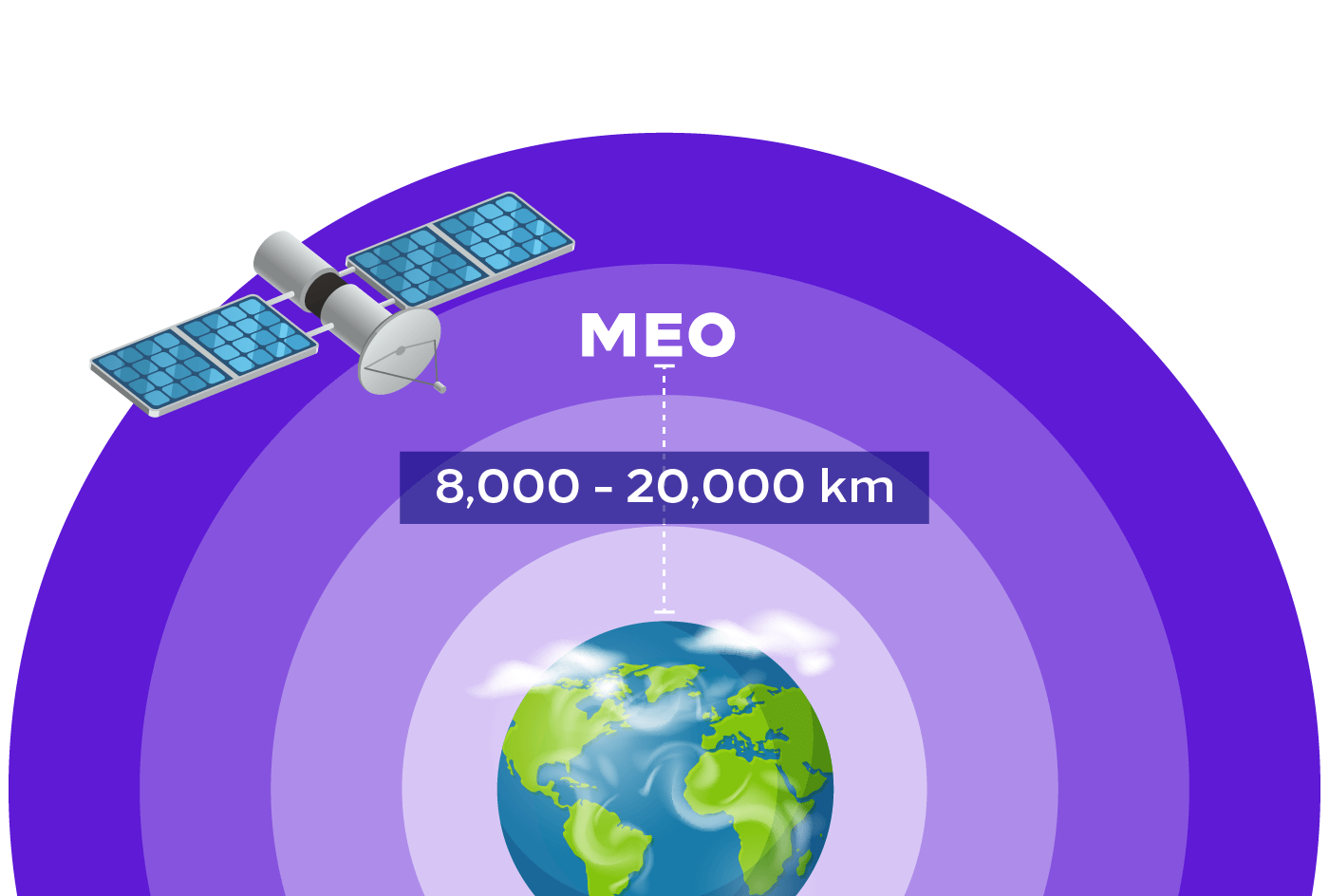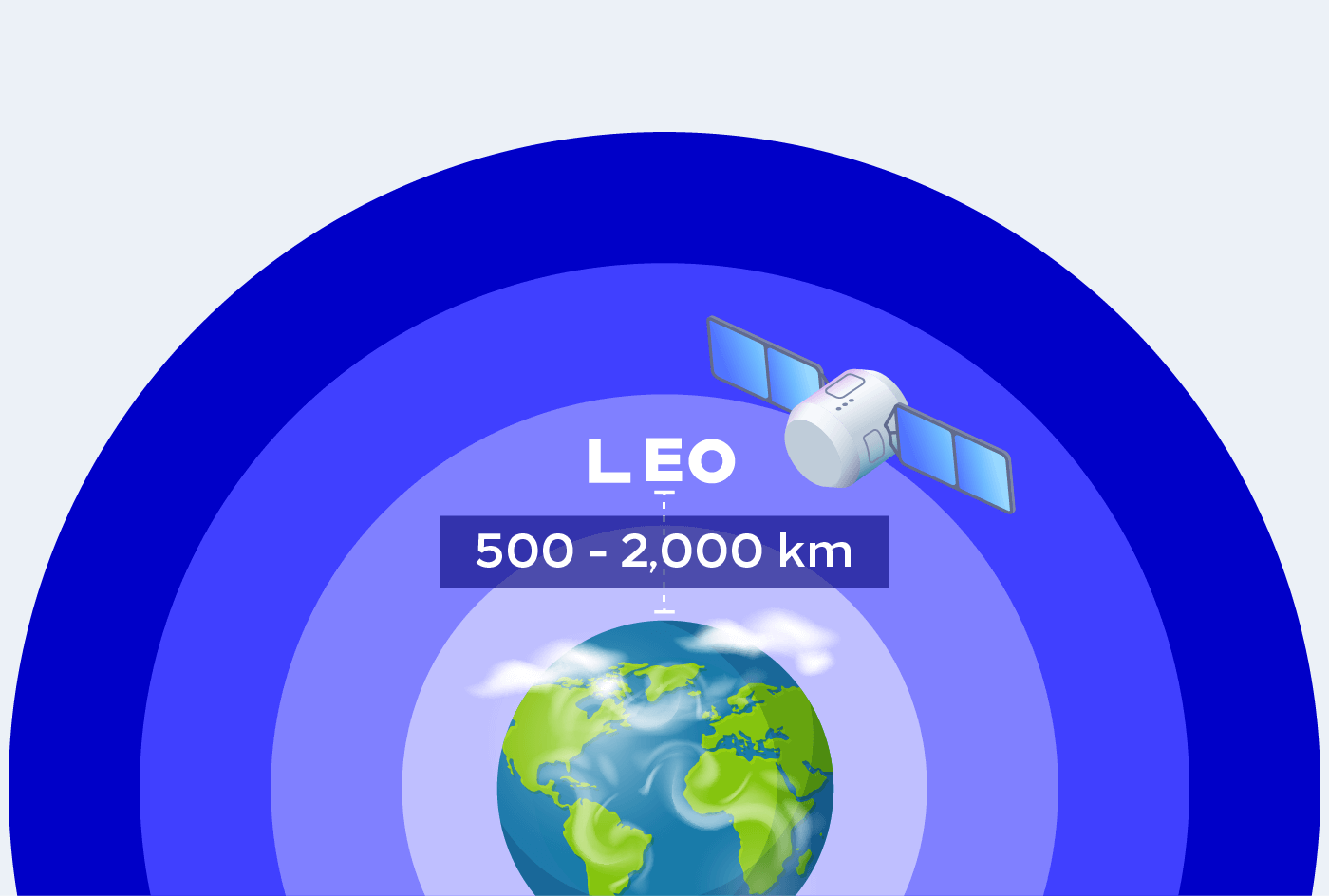
Space-borne
Satellite communication networks utilize space-borne platforms which include low Earth orbiting (LEO) satellites, medium Earth orbiting (MEO) satellites, and geosynchronous Earth orbiting (GEO) satellites.

GEO SATELLITE
A geostationary satellite Earth orbit (GEO) is a circular orbit at 35,786 kilometers above the Earth's equator. An object in such an orbit has an orbital period equal to the Earth's rotational period and thus appears motionless, at a fixed position in the sky, to ground observers.
The GEO vehicle embarking a bent pipe payload or a regenerative payload telecommunication transmitter
1 / 3

MEO SATELLITE
Satellite: a space-borne vehicle embarking a bent pipe payload or a regenerative payload telecommunication transmitter, placed into medium-Earth orbit (MEO) typically at an altitude between 8000 to 20000 km.
2 / 3

LEO SATELLITE
THE Low earth orbit (LEO) is an Orbit around the Earth with an altitude between 500 kilometres (orbital period of about 88 minutes), and 2,000 kilometres (orbital period of about 127 minutes).
The Leo vehicle is embarking a bent pipe payload or a regenerative payload telecommunication transmitter
3 / 3
Table Matrix
| GEO (35,786km) | MEO (8000 to 20000 km) | LEO (500-2000KM) | |
|---|---|---|---|
| Altitude latency | High | Low | Very low |
| Earth coverage | Very large | Large | Small |
| Satellites required | Three | Six | Hundreds |
| Data gateways | Few fixed | Regional flexible | Local numerous |
| Antenna speed | Stationary | 1-hour slow tracking | 10-minute fast tracking |
| Advantages | High throughput (HTS) technologies enable basic broadband internet applications | Proven low latency comparable to terrestrial networks, offers fibre-equivalent performance | Claims support for high-frequency trading, virtual gaming, and high-performance computing applications |
| Fewer satellites over very large fixed geographical areas | Simple equatorial orbit covers 96% of global population | Smaller, lower power satellites batch-launched more cheaply than GEO | |
| Disadvantages | High altitude and distant ground networking impacts latency-sensitive applications | Dual tracking antennas required to maintain continuous connectivity | Very complex tracking and ground network, plus complete constellation must be in place before service starts |
| Signal power losses require larger satellites and antennas | Inclined plane orbits needed to cover high latitudes | Unproven business model, risky technology, and space debris risk |

